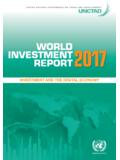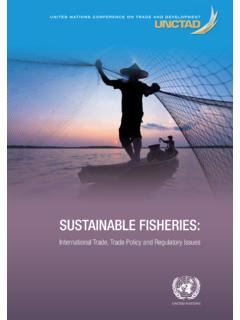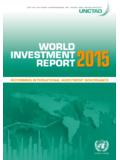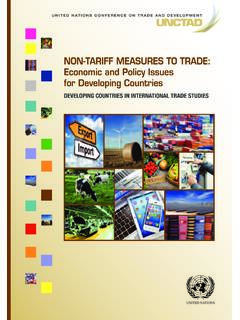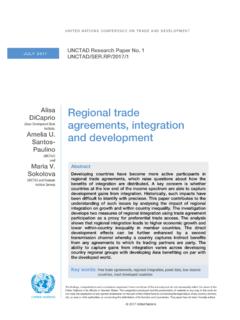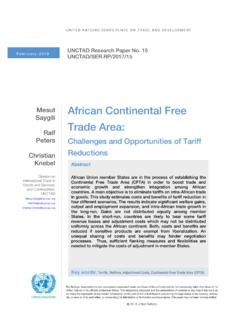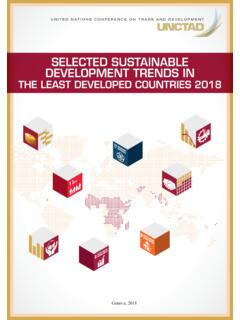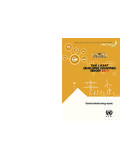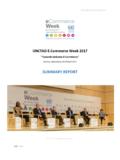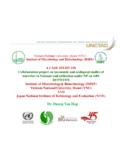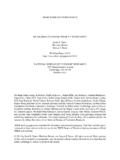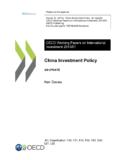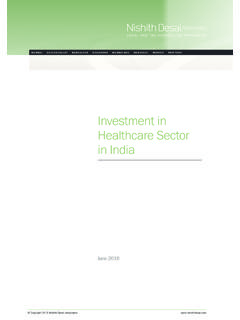Transcription of Investment and Innovation Policy Review of Ethiopia
1 UNCTAD/ITE/IPC/Misc. 4 United Nations Conference on Trade and Development Investment AND Innovation Policy Review Ethiopia UNITED NATIONS New York and Geneva, 2002 Note UNCTAD serves as the focal point within the United Nations Secretariat for all matters related to foreign direct Investment and transnational corporations. In the past, the Programme on Transnational Corporations was carried out by the United Nations Centre on Transnational Corporations (1975-1992) and the Transnational Corporations and Management Division of the United Nations Department of Economic and Social Development (1992-1993).
2 In 1993, the Programme was transferred to the United Nations Conference on Trade and Development. UNCTAD seeks to further the understanding of the nature of transnational corporations and their contribution to development and to create an enabling environment for international Investment and enterprise development. UNCTAD's work is carried out through intergovernmental deliberations, technical assistance activities, seminars, workshops and conferences. The term country as used in this study also refers, as appropriate, to territories or areas; the designations employed and the presentation of the material do not imply the expression of any opinion whatsoever on the part of the Secretariat of the United Nations concerning the legal status of any country, territory, city or area or of its authorities, or concerning the delimitation of its frontiers or boundaries.
3 In addition, the designations of country groups are intended solely for statistical or analytical convenience and do not necessarily express a judgement about the stage of development reached by a particular country or area in the development process. The following symbols have been used in the tables: Two dots (..) indicate that data are not available or are not separately reported. Rows in tables have been omitted in those cases where no data are available for any of the elements in the row; A dash (-) indicates that the item is equal to zero or its value is negligible; A blank in a table indicates that the item is not applicable; A slash (/) between dates representing years, , 1994/95, indicates a financial year; Use of a hyphen (-) between dates representing years, , 1994-1995, signifies the full period involved, including the beginning and end years.
4 Reference to dollars ($) means United States dollars, unless otherwise indicated. Annual rates of growth or change, unless otherwise stated, refer to annual compound rates. Details and percentages in tables do not necessarily add to totals because of rounding. The material contained in this study may be freely quoted with appropriate acknowledgement. UNITED NATIONS PUBLICATION Copyright United Nations, 2002 All rights reserved CONTENTS Abbreviations .. vi 1 CHAPTER I National Determinants of Investment Flows into Ethiopia A. Recent Changes in the Macro- Policy Environment.
5 10 B. Policy Coordination in a Federal System .. 11 C. The Need for Core Competence at the Regional Level .. 12 D. Comparative International Position of the Ethiopian Economy .. 13 Overall 16 Tables .. 17 CHAPTER II Investment Policy and Promotion A. FDI Inflow to Ethiopia : 1991-1999 .. 23 (i) The level and value of new Investment projects .. 23 (ii) Regional and sectoral distribution of Investment benefits .. 24 (iii) The origin of FDI in 25 B. The FDI Regulatory 26 (i) Economic sectors open to FDI .. 26 (ii) Ownership limitations and 27 (iii) Monitoring and reporting requirements.
6 28 (iv) Financial incentives for 28 C. Institutional Framework for FDI 30 (i) Ethiopian Investment authority .. 30 (ii) Investment promotion by other Government 34 (iii) Private sector FDI promotion .. 38 D. Current and Future Challenges in Investment Policy and Promotion .. 40 (i) Ethiopia s international Investment 40 (ii) FDI targeting and project 42 (iii) Targeting FDI opportunities .. 42 (iv) Ethiopia s FDI targeting capability .. 44 (v) The FDI Policy challenges to 2010 .. 44 E. Investment Policy and Promotion Strategy for Ethiopia to 2010.
7 45 (i) Ethiopia 's international Investment opportunities .. 45 Overall Assessment .. 47 Tables .. 49 iii CHAPTER III Agricultural Sector 51 A. Agricultural Development in 51 B. The Organizational and Management of Technological Change in Ethiopian Agriculture: Review and Assessment of Recent Reforms .. 53 (i) Strategic and organizational 53 (ii) Agricultural research and extension in the smallholder sector .. 54 (iii) Revised strategy .. 55 (iv) Agricultural 57 (v) Human resource development plan (HRDP).
8 57 (vi) Seed multiplication and fertilizer facilities .. 58 (vii) Research and development management .. 59 C. Case Studies in Agricultural 60 (i) Textile .. 61 (ii) Learning institutions .. 62 (iii) Horticulture .. 63 D. Investment Potential in the Agricultural 64 Overall Assessment .. 66 Boxes .. 67 CHAPTER IV The Leather Sector 73 A. The Value Chain in the Leather Goods Industry of Ethiopia .. 74 (i) The Ethiopian livestock base .. 74 (ii) The tanning 76 (iii) The footwear and leather products sub-sector.
9 76 B. Strengths, Challenges, Opportunities and Constraints .. 77 C. Support Systems for Investment and Innovation .. 78 (i) The Ministry of Agriculture (MOA) .. 78 (ii) The Ministry of Trade and Industry (MOTI) .. 79 (iii) The Ethiopian Tanners Association (ETA) .. 79 (iv) The Quality and Standards Authority of Ethiopia (QSAE).. 80 (v) The Productivity Improvement Centre (PIC) .. 80 (vi) The Leather and Leather Products Training Development Institute (LLPTD).. 81 Overall Assessment .. 82 Chart 1 .. 83 Boxes & Tables .. 84 iv CHAPTER V Small and Medium-size Enterprises (SMEs) 87 A.
10 The Evolution of Manufacturing Activities in Ethiopia .. 87 B. Method of 88 C. Investment and Innovation Potential and Constraints .. 89 D. Market E. Innovative activities in SMEs .. 94 F. Attracting FDI from SMEs .. 100 G. Support Infrastructure for 101 (i) The Ministry of Trade and Industry (MOTI) .. 101 (ii) The Federal Micro and Small Enterprises Development Agency (FeMSEDA). 101 (iii) The Regional Micro and Small Enterprises Development Agency (ReMSEDA)102 Overall Assessment .. 104 Conclusions and Recommendations A. Conclusions.
